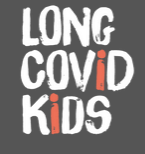Restrictive ventilatory defect (HP:0002091)
A functional defect characterized by reduced total lung capacity (TLC) not associated with abnormalities of expiratory airflow or airway resistance. Spirometrically, a restrictive defect is defined as FEV1 (forced expiratory volume in 1 second) and FVC (forced vital capacity) less than 80 per cent. Restrictive lung disease may be caused by alterations in lung parenchyma or because of a disease of the pleura, chest wall, or neuromuscular apparatus.
Synonyms: Stiff lung or chest wall causing decreased lung volume, Restrictive deficit on pulmonary function testing, Restrictive deficit on pulmonary function tests, Restrictive respiratory disease, Restrictive respiratory insufficiency, Restrictive respiratory syndrome, Spirometric restriction, Restrictive lung disease
Comment: The most commonly used term for this feature is restrictive lung disease, but we choose the term Restrictive ventilatory defect to emphasize that this term refers to a phenotypic feature rather than a disease entity.
Pubmed References: PMID:28194273
Cross References: SNOMEDCT_US:36485005, UMLS:C0085581, UMLS:C3277226
KEGG Pathway
| Index | Name | P-value | Adjusted p-value | Odds Ratio | Combined score |
| 1 | Neuroactive ligand-receptor interaction | 0.00001608 | 0.0001608 | 38.88 | 429.14 |
| 2 | Primary immunodeficiency | 0.01884 | 0.07259 | 59.92 | 237.98 |
| 3 | Autoimmune thyroid disease | 0.02619 | 0.07259 | 42.60 | 155.17 |
| 4 | B cell receptor signaling pathway | 0.03978 | 0.07259 | 27.65 | 89.16 |
| 5 | Rheumatoid arthritis | 0.04555 | 0.07259 | 24.03 | 74.23 |
GO: Biological Process
| Index | Name | P-value | Adjusted p-value | Odds Ratio | Combined score |
| 1 | synaptic transmission, cholinergic (GO:0007271) | 8.685e-8 | 0.000003648 | 535.02 | 8698.92 |
| 2 | neuromuscular junction development (GO:0007528) | 1.812e-7 | 0.000004033 | 407.53 | 6326.45 |
| 3 | negative regulation of regulatory T cell differentiation (GO:0045590) | 0.002498 | 0.01614 | 555.17 | 3326.77 |
| 4 | neuromuscular process (GO:0050905) | 0.00003830 | 0.0003971 | 293.72 | 2987.15 |
| 5 | postsynaptic membrane organization (GO:0001941) | 0.00003830 | 0.0003971 | 293.72 | 2987.15 |
GO: Molecular Function
| Index | Name | P-value | Adjusted p-value | Odds Ratio | Combined score |
| 1 | neurotransmitter receptor activity involved in regulation of postsynaptic membrane potential (GO:0099529) | 1.878e-10 | 4.131e-9 | 783.25 | 17541.62 |
| 2 | transmitter-gated ion channel activity involved in regulation of postsynaptic membrane potential (GO:1904315) | 8.580e-10 | 9.438e-9 | 511.90 | 10686.61 |
| 3 | transmitter-gated ion channel activity (GO:0022824) | 1.451e-9 | 1.064e-8 | 443.56 | 9026.96 |
| 4 | postsynaptic neurotransmitter receptor activity (GO:0098960) | 1.191e-7 | 6.068e-7 | 475.52 | 7581.26 |
| 5 | acetylcholine receptor activity (GO:0015464) | 1.379e-7 | 6.068e-7 | 450.47 | 7115.97 |
GO: Cellular Component
| Index | Name | P-value | Adjusted p-value | Odds Ratio | Combined score |
| 1 | neuromuscular junction (GO:0031594) | 4.712e-12 | 5.183e-11 | 604.76 | 15772.67 |
| 2 | acetylcholine-gated channel complex (GO:0005892) | 3.267e-8 | 1.198e-7 | 778.40 | 13417.28 |
| 3 | ion channel complex (GO:0034702) | 5.841e-7 | 0.000001606 | 267.29 | 3836.51 |
| 4 | integral component of plasma membrane (GO:0005887) | 3.020e-8 | 1.198e-7 | 51.30 | 888.24 |
| 5 | voltage-gated sodium channel complex (GO:0001518) | 0.008469 | 0.01553 | 138.71 | 661.82 |
Hub genes predicted as biomarkers and FDA approved drugs
| Hub Genes (ranked) | FDA-Approved Drugs |
| SCN4A | LEVOBUPIVACAINE HYDROCHLORIDE, BUPIVACAINE HYDROCHLORIDE |
| CHRNE | SUCCINYLCHOLINE CHLORIDE, PIPECURONIUM BROMIDE, MIVACURIUM CHLORIDE, METOCURINE IODIDE, DOXACURIUM CHLORIDE, VECURONIUM BROMIDE, DECAMETHONIUM BROMIDE |
| RAPSN | – |
| CHRND | SUCCINYLCHOLINE CHLORIDE, PIPECURONIUM BROMIDE, MIVACURIUM CHLORIDE, METOCURINE IODIDE, DOXACURIUM CHLORIDE, VECURONIUM BROMIDE, DECAMETHONIUM BROMIDE |
| CHRNA1 | SUCCINYLCHOLINE CHLORIDE, PIPECURONIUM BROMIDE, MIVACURIUM CHLORIDE, METOCURINE IODIDE, DOXACURIUM CHLORIDE, VECURONIUM BROMIDE, DECAMETHONIUM BROMIDE |
| CHRNB1 | SUCCINYLCHOLINE CHLORIDE, PIPECURONIUM CHLORIDE, MIVACURIUM CHLORIDE, METOCURINE IODIDE, DOXACURIUM CHLORIDE, VECURONIUM BROMIDE, DECAMETHONIUM BROMIDE |
| DOK7 | – |
| MUSK | – |
| CTLA4 | IPILIMUMAB, ABATACEPT |
| CD19 | BLINATUMOMAB |


